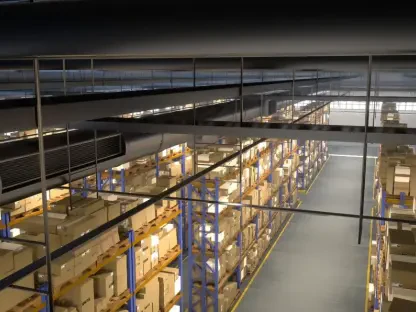Greater Manchester is poised for a transformation in its public transportation landscape, with leaders focusing on integrating rail services into the expansive Bee Network. This ambitious move seeks to create a seamless, efficient travel system similar to London’s. Delving into Greater Manchester’s aspirations, ongoing consultations, and steps taken, this article examines whether the city-region can achieve a cohesive travel experience for its residents.
Consultation and Reform Agenda
Greater Manchester’s Vision
Greater Manchester leaders have long advocated for local accountability over rail services, aspiring to align with the government’s plan to introduce Great British Railways (GBR). Mayor Andy Burnham has proposed a detailed three-phase plan with a vision to integrate rail into the Bee Network by 2028. Burnham aims to develop a public transport system that provides smooth, dependable travel options across the city-region, enabling passengers to move seamlessly among trains, buses, and trams.
Ensuring that public transport is user-friendly and integrated is pivotal to Manchester’s transport plans. Local leaders believe that without the power to influence significant decisions, achieving the goal of a London-style system remains challenging. The ultimate objective is to deliver a public transport system that residents can rely on, where efficiency and flexibility are paramount.
Local Accountability and Integration
A key ambition of Greater Manchester is to secure a statutory role in major railway decisions. This push for local accountability includes setting fares and utilizing underused land around stations. Leaders argue that such measures will improve service reliability and integration with other transport modes, providing substantial benefits to commuters.
The Greater Manchester Combined Authority (GMCA) and Transport for Greater Manchester (TfGM) have made it clear they intend to collaborate intensively with the government to facilitate these changes. Bringing rail services under local accountability is seen as a step forward, unlocking numerous benefits such as fostering growth, better service quality, and improved passenger experiences. This collaborative effort is embraced as both a solution and a necessity for the region’s evolving transportation needs.
Key Aspects of the Proposed Reform
Fare and Ticketing Control
An integral aspect of Greater Manchester’s proposed rail system reform is gaining influence over fare setting within the city-region. Expanding current bus and tram fare caps to include rail travel aims to provide passengers with the best value fares possible. Such measures are expected to significantly enhance affordability and convenience for all users of the network.
Enhancing fare and ticketing control will ensure smoother transitions between various modes of transport, reducing the journey costs and complexities for daily commuters. A more streamlined and user-friendly fare system will encourage greater use of public transport. With these changes, it’s anticipated that more residents will opt for public transport options, thus reducing road congestion and contributing to the region’s sustainability goals.
Service Regulation
Greater Manchester’s leaders are advocating for significant influence in the scheduling and frequency of rail services. The collaboration with GBR seeks to tailor services to meet local demands better and enhance connectivity within the city-region. In addition, providing input on national rail services that traverse Greater Manchester is a crucial element of the reform, ensuring that local requirements are not overlooked.
Influencing rail service regulation allows Greater Manchester to ensure that train schedules align optimally with those of buses and trams. Such synchronization will create a more coordinated and efficient system, reducing wait times and making public transport more attractive to commuters. It’s a substantial step toward making journeys within the city-region less fragmented and more cohesive.
Enhancing Infrastructure and Services
Funding and Investment Authority
A goal of the proposed reforms is to secure more control over local rail funding and investment decisions. This desire to steer local investments aims to enhance rail services and improve stations. The ambition of Greater Manchester is to make two-thirds of the region’s rail stations accessible by 2028. Such accessibility improvements are crucial, ensuring equitable and efficient transport for all users, especially those with mobility challenges.
By acquiring authority over funding, Greater Manchester can prioritize projects that yield the most significant benefits for its residents. Investing in infrastructure tailored to local needs ensures that improvements match the area’s specific requirements, fostering a more responsive and effective rail network.
Station Management and Land Utilization
Another focus of Greater Manchester’s transport plan is setting higher standards for station maintenance and upgrades. Holding station owners accountable is essential for ensuring that facilities remain in excellent condition and meet user expectations. Furthermore, Greater Manchester intends to utilize redundant railway land for affordable housing and transport-led regeneration projects, contributing to the overall development of the region.
Efficient station management and strategic land utilization can substantially impact the local community. By transforming underused spaces into valuable assets like affordable housing or commercial zones, Greater Manchester seeks to stimulate economic growth and enhance the urban environment. Such initiatives align well with broader objectives of sustainable development and improved quality of life for residents.
Local Transport Plans and Collaboration
Adoption of Local Transport Plans
Adopting plans aligned with local transport priorities is vital for achieving a cohesive public transport system. Greater Manchester’s proposal encourages Great British Railways to integrate rail projects with local transportation schemes, ensuring consistency in public transport planning. Such alignment is seen as essential for the comprehensive development of the region’s infrastructure, promoting a well-coordinated approach to public transportation.
Local transport plans that reflect the specific needs and aspirations of the community ensure that development initiatives have greater relevance and effectiveness. Adopting these plans provides a solid foundation for coherent and cohesive public transport planning, thus driving the region’s progress toward a highly integrated public transportation network.
Government Collaboration
Greater Manchester is on the brink of a major transformation in its public transportation system. Leaders in the area are concentrating on integrating rail services into the expansive Bee Network, which aims to establish a seamless and efficient travel system mirroring the successful model used in London. This ambitious project is geared towards significantly enhancing the ease and efficiency of travel for Greater Manchester’s residents. The article delves into the city-region’s aspirations and ongoing consultations while also outlining the steps already taken to achieve a unified travel experience. The goal is to determine whether Greater Manchester can realize its vision of creating a cohesive and user-friendly transportation network. Achieving such an integrated system would not only streamline commuting but also boost overall connectivity within the region, improving daily travel for thousands of residents. As plans progress, local leaders remain committed to the promise of a more connected and efficient public transportation network that meets the needs of its users.









